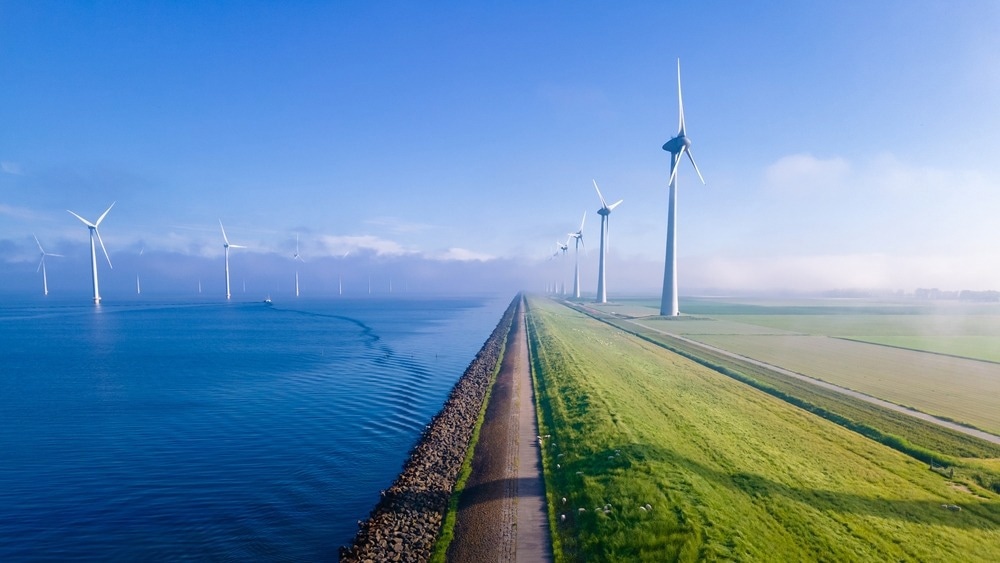The engineers at Cornell have enhanced a model that serves a dual purpose: generating green energy while also desalinating ocean water, offering a potential solution for large, drought-affected coastal populations.

Image Credit: fokke baarssen/Shutterstock.com
Science can fulfill the energy and hydration essentials of coastal cities with one system by propelling seawater to a mountaintop reservoir and then engaging gravity to send the salty water down to a co-located hydropower plant and a reverse osmosis desalination facility.
With our growing population, there are increasing energy demands and mounting freshwater needs.
Maha Haji, Assistant Professor, Sibley School of Mechanical and Aerospace Engineering, Cornell University
Haji and Matthew Haefner, a doctoral student in systems engineering, are co-authors of the study, which was published in Applied Energy.
The Integrated Pumped Hydro Reverse Osmosis System (IPHROS) is a two-system model. Haji says, “where energy storage and freshwater production are coupled in a symbiotic way. The reservoir storage will allow coastal communities to tap into renewable energy for their electric grid and potable water production. The reverse osmosis portion of this model adds flexibility to the system.”
Seawater can be a feasible solution in places such as Southern California, where water scarcity is common and fresh water is required for agriculture.
Once the ocean water is pumped to the mountaintop reservoir, powered by renewable electricity, it descends to the hydropower plant and a community-scale desalination system. The concentrated brine residue produced from the desalination process merges with the incoming ocean water, gets diluted, and is subsequently redirected back out to sea, away from the coastal area.
According to Haji and Haefner, a big system can provide 5.79 million cubic meters of fresh water and 79.5 million kilowatt-hours of energy per day with ideal model designs, essentially meeting the daily demands of 661,000 houses.
The IPHRO system can help reduce capital investment in building costs, lower maintenance overhead, and bring about a natural way to dilute the highly saline discharge following reverse osmosis.
We’re seeing an increase in droughts around the world and there are regions of the world that naturally just don’t have access to clean drinking water. We’re also draining aquifers pretty quickly, so even in regions that are historically water secure, they are becoming less secure due to factors such as increased urbanization and the effects of global warming.
Matthew Haefner, Study Co-author and Doctoral Student, Systems Engineering, Sibley School of Mechanical and Aerospace Engineering, Cornell University
The concept of pumped storage hydropower (PSH), involving an upper reservoir feeding a lower reservoir to generate energy, isn't novel. In the United States, there are currently 43 PSH plants as of 2021, boasting a combined capacity of 21.9 gigawatts and an energy storage capacity of nearly 553 gigawatt hours.
These numbers, sourced from the US Department of Energy (DOE), account for approximately 93% of the nation's total utility-scale domestic energy storage capacity.
According to the DOE, this type of hydropower is adaptable enough to balance the supply and demand for electricity in regional systems. It has the energy capacity to satisfy heavy load requirements.
The study credits Alexander Slocum, a Professor of mechanical engineering at the Massachusetts Institute of Technology, for introducing the IPHROS concept in 2016. Haji was a co-author of that work; this study extends the concept by proposing detailed mathematical modeling, as well as presenting a framework for optimizing the design and operation to increase freshwater and energy production.
Haji says, “Going forward, we’re just going to be more pressed for energy and water needs. Those ideas are inherently tied together and we think IPHROS – bringing clean energy and fresh water together – is a solution we can have in the toolbox for tackling that problem.”
The research was funded by Cornell.
Journal Reference
Matthew W. Haefner, and Maha N. Haji (2023). Integrated Pumped Hydro Reverse Osmosis System optimization featuring surrogate model development in Reverse Osmosis modeling. Science Direct. doi.org/10.1016/j.apenergy.2023.121812